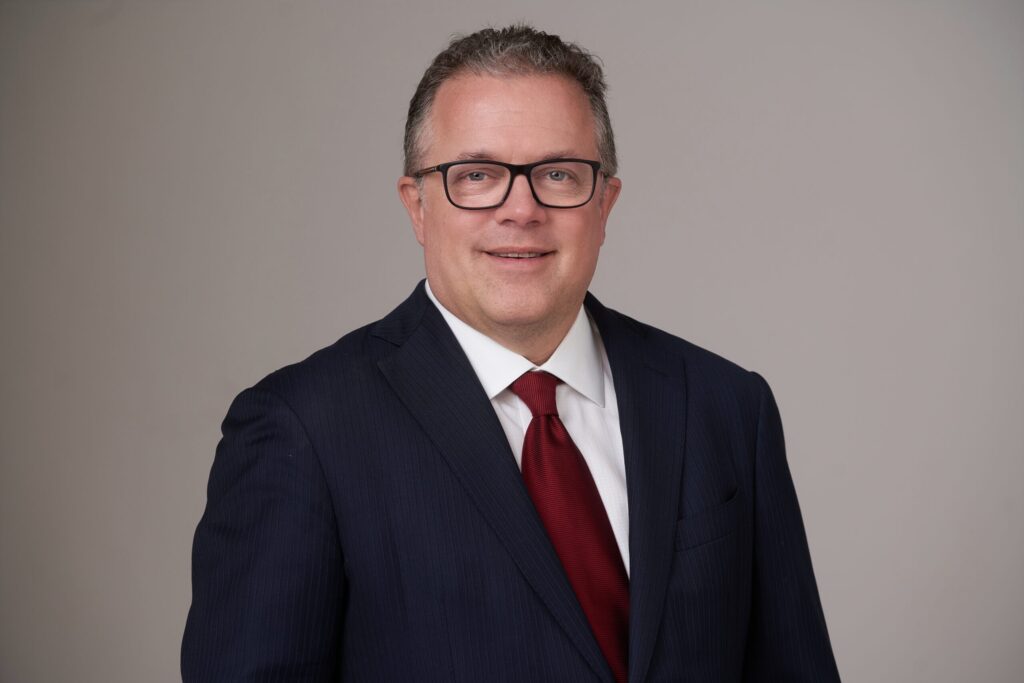Michael Nairne is a pioneer in the Canadian multi-family office space. Nairne co-founded Tacita Capital 20 years ago along with his spouse, Joanne Swystun, a tax lawyer and former partner with Stikeman Elliott.
His first investment business was Equion Securities, which he led through a 1995 merger with Loring Ward Investment Counsel to create Assante Corp. During his tenure, Assante grew from $1 billion to more than $20 billion in assets under management (AUM), including $8 billion in leading tax-managed asset allocation programs.
Assante was acquired by CI Financial in 2003, a liquidity event for the Nairne/Swystun family, and he became chief operating officer of Loring Ward Inc., a family office in New York and Los Angeles.
His exposure to the U.S. multi-family office model—discretionary portfolio management that was private, independent and open-architecture—prompted Nairne to set up his own MFO in 2005. In a 2006 article on advisor.ca, he noted the importance of offering services that cover clients’ entire household balance sheets, including personal, portfolio and business assets, while providing advice.
Today, Tacita Capital, with a staff of 17 that includes Nairne as president and chief investment officer, Swystun as vice-president, director and head of wealth management, and two of the couple’s three children, covers some 60 families and manages $1.2 billion in assets, including their own family’s money.
Nairne talked to Canadian Family Offices about how the industry has evolved, the importance of tax-conscious investing, the value of independence in an MFO and the challenges of affluence for wealthy families.
What services does Tacita Capital provide?
We’re a private and independent discretionary portfolio manager, investment fund manager and exempt market dealer. You’ve got the full range of those functions being handled by us as a management team; then we also work very closely with clients in terms of their wealth plan.
How did your past career lead to what you’re doing now?
I’ve been in the securities industry since 1980. I built Equion Securities with my colleagues as a firm that was an early adopter of sophisticated investment planning for clients, then I became a registered financial planner and I moved to discretionary portfolio planning in the early 2000s.
That evolution really impacted our approach, where portfolio planning has to be integrated into the client’s financial, retirement and cash-flow planning. Then, with Joanne as a co-founder and partner in Tacita Capital, it brought a strong tax piece in.
What is Tacita Capital’s focus on client taxes all about?
We work closely with our clients’ accountants and we get their tax returns every year. We have a tax profile of the client—all their entities—and plan and manage to minimize unnecessary investment taxes.
Can you offer an example of why that’s important?
We were recently looking at a client who, as a result of a major sale, is going to have a big whack of alternative minimum tax. We’re shifting the portfolio mix to better absorb that, while still delivering the target returns and risk level the client wants. We’re not going to do as much, let’s say, in equities. We’re going to do more in high-yield or mortgages or investment-grade bonds, so we can better mop up that tax.
If you’re running a public company that’s also an investment firm, you’ve got an inherent conflict, because your shareholders want profits and your clients want performance.
Isn’t that kind of thinking the norm in the industry?
No, in fact, most of the big firms do only portfolio management. Some have started to add in a tax element, but once you move to that scale, it’s hard to work at a highly customized level.
Why is customization important?
The promise of the multi-family office is, ‘We understand your balance sheet, we understand your family, we understand your entities, your trust, your alter-ego trust, your corporation. We know you’ve got a kid in the U.S., we know you’ve got a financial independence plan, perhaps there’s been a sale of a business.’
All those things come together so you’re looking at the entire balance sheet, the complete tax profile, the entire family, the risk profile and preferences. That portfolio and its integration with other elements is what adds the value, but that is not delivered by most of the industry, because it requires a ton of custom work.
Why is that customization difficult to deliver?
What drives the industry is to get scale. A true multi-family office is not that scalable.
Your MFO developed in a unique way.
I came at it with Joanne from a tax and portfolio planning standpoint, which led to this view of integrating investment tax planning right into the very fibre of what we’re doing.
Every single family office and every multi-family office is different in its own way, depending on the skills, experience, qualifications and evolution of the partners, and what type of clients they’re working with.
And your own family is also a client of your MFO?
Yes, we argue it’s an authentic multi-family office, because you have a founding family, whose assets are there. One of my clients said, ‘I get a lot of comfort knowing your cheque’s in the pile.’
How has the MFO space evolved since you began?
The industry has attracted what I call commercial multi-family offices, where people get together and they’ve got a background in portfolio planning or wealth planning, and they decide, ‘We’re going to create a family office.’
What’s the issue with those commercial operations?
Your long-term planning is different. If you haven’t had a liquidity event that created the family office, then you’re planning a liquidity event at the back end. The commercial multi-family office is usually slated at some time for sale.
We have our own family capital to manage, so we’re either doing it or I’m hiring somebody to do it, and I’d rather do it.
Describe your focus on portfolio construction.
Our focus goes back to the founding of modern finance. Asset mixes and the associated risk factors and characteristics are the building blocks, but how you combine those in a long-term diversified portfolio is a function of four variables: the expected return, the volatility, the correlation, and we add in the tax aspect. We actually update every year based on 15-year forecasts where there are key asset classes: high yield, pref shares, Canadian equities, U.S. equities, emerging markets, real assets, privates, gold.
When we started doing this, there were a handful of firms that did it. Now we monitor about 25 firms that do projections, because if you’re going to do a long-term plan, you better have a target return coming out of it. With that work, we can use asset mix optimization models to develop a portfolio mix for a given level of risk, and that’s what we do with our clients.
What trends do you see in ultra-high-net-worth investing?
Two waves have hit over the last 20 years. One was the rise of exchange-traded funds, which have been increasingly adopted by institutions and high-net-worth families. The second is the diversity and the number of hedge fund strategies out there, and how certain companies have come together to create better solutions.
And now you’re seeing private investments go through a phase with evergreen funds, which are open-ended funds with limited liquidity. For most high-net-worth families, these evergreen private funds are going to play a role in the portfolio that hasn’t yet been fulfilled by traditional private equity.
How are you positioning your firm for the rest of this year, and for the future?
First, we’re only strategic for our clients. They have long-term goals, and we’re building diversified long-term portfolios to get there. And so we will vary our mixes only modestly, allowing, for example, a modest cash buildup in a period where we think there’s higher volatility, but still staying well within that custom strategy of that client. So we do not take a market-timing perspective.
One of the reasons we’ve integrated hedge funds into our basic model is that hedge fund managers live in front of their screens. They are typically focused on risk-adjusted returns, not just returns. So, for example, when the Trump bump turned into the Trump slump, we talked to all the various hedge funds, asked what they were doing, and many had adopted a more defensive air. Many had identified areas where they felt there’d be opportunities. So that’s where we’re getting a lot of our tactical movement in our portfolios.
Why do you like doing what you do?
Practically speaking, we have our own family capital to manage, so we’re either doing it or I’m hiring somebody to do it, and I’d rather do it. Then, even more practically, we work with really great clients, a relatively small number, particularly relative to the number of portfolio managers we have. And you really get to know your client well, what they want out of life and what’s happening to them. So it’s gratifying to be able to help them on their financial journey, and really quite meaningful.
We don’t take commissions; the only person who pays us is our client. We’re open-architecture and private and independent. We’re as close to being on the client side of the table as we can be.
Indeed, you’re a Tacita Capital client.
We are—that’s a good point. It gets rid of the conflicts. If you’re running a public company that’s also an investment firm, you’ve got an inherent conflict, because your shareholders want profits and your clients want performance and you’ve got the question of, ‘What do I charge for? How do I earn fees? How do I get more business? How do I get more AUM?’ We’re not in the AUM-collection business, we’re in the help-clients-achieve-what’s-important-in-their-life business.
Does your position as a fellow investor who’s had a liquidity event bring other lessons for your clients?
We have a lot of empathy for our clients, because we’ve had all those same situations. Issues like how do you move wealth down to the next generations and still retain control? How do you turn your kids into good investment stewards?
What are the top issues that wealthy families are facing these days?
Their overriding concern is typically, ‘I don’t want my kids ruined by this money.’ Their other major concern is minimizing unnecessary tax drag.
How should these children learn about handling money?
Our belief is that the best way you can turn your kids into investment stewards is through experience with a moderate amount of capital, but with proper investment plans, in writing. Get them into real investing. Expect some level of speculative investing, because of social media, but put a box around it.
So the lessons should be hands-on?
Yes. The second level is, how are you managing your capital in front of your kids? Are you prudent with the money? If you’re somebody who’s splashing it around, your kids will learn to splash it around—fast. You can even start earlier, for instance when they go off to university, they’ve got to live to a budget, it’s not open-ended.
In all those ways, you’re trying to turn them into responsible stewards over time.
Michael Nairne, RFP, CFP, CFA, is president and CIO of Tacita Capital Inc., a private multi-family office based in Toronto, Canada. Responses have been edited for clarity and length.
Mary Gooderham is a writer, editor and communication advisor based in Ottawa. She leads Cohen Gooderham Communications and has worked as a journalist for more than 40 years at The Globe and Mail, as a recording officer at the International Monetary Fund and as a custom content creator for online and print media. She’s been a contributing writer at Canadian Family Offices for four years, focusing on investment strategy, trusts, philanthropy, women in finance and estate planning.
The Canadian Family Offices newsletter comes out on Sundays and Wednesdays. If you are interested in stories about Canadian enterprising families, family offices and the professionals who work with them, but like your content aggregated, you can sign up for our free newsletter here.
Please visit here to see information about our standards of journalistic excellence.




